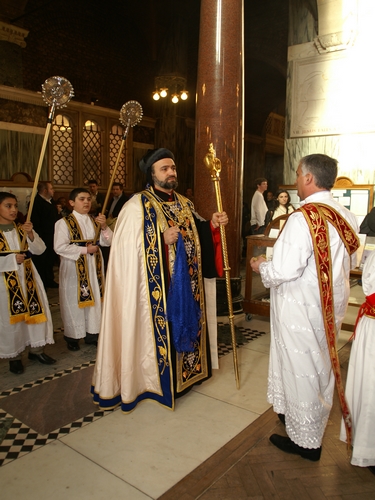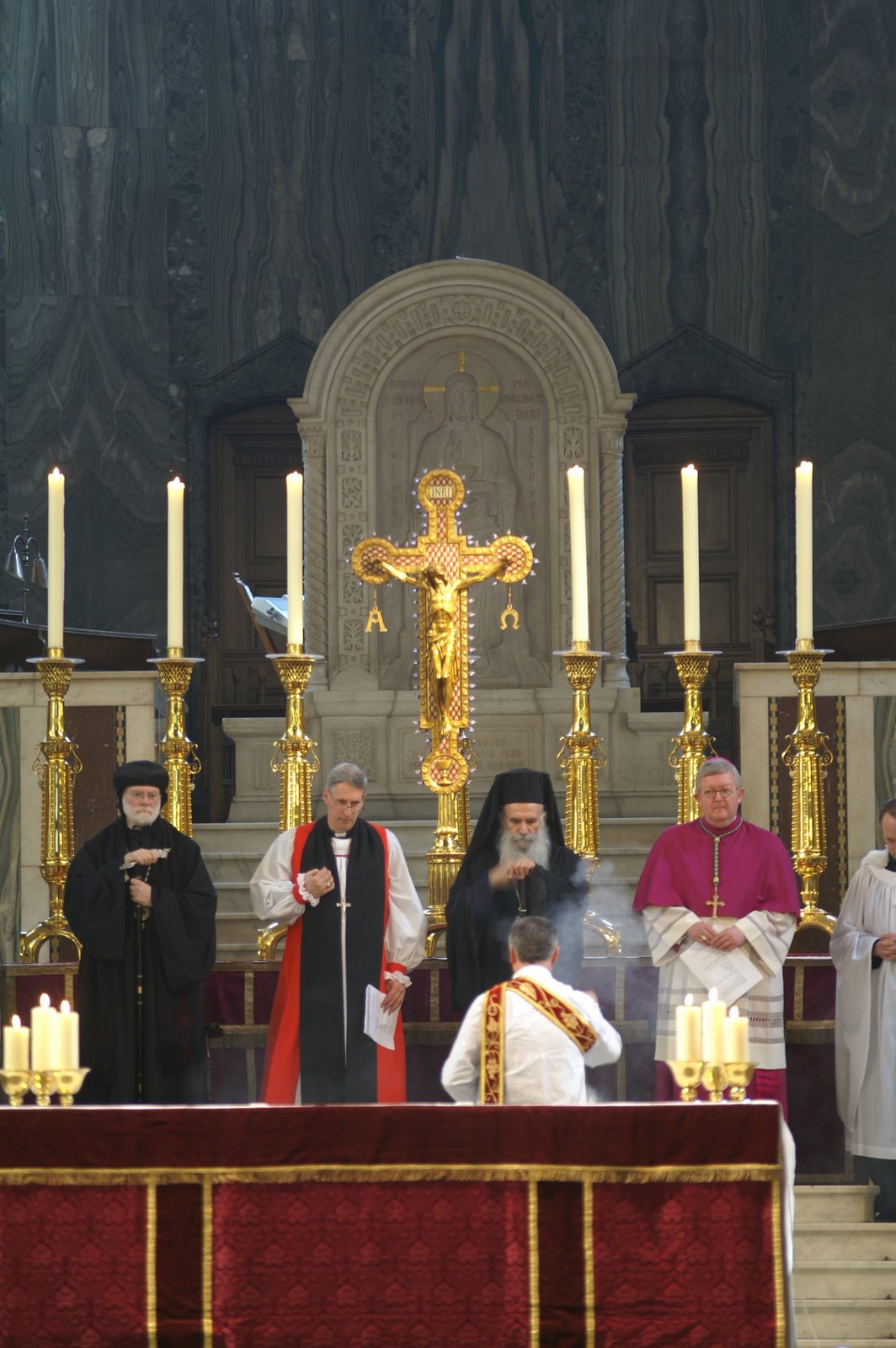
On Saturday 11 March, Westminster Cathedral invited the Syriac Orthodox community in London to celebrate Saturday Vespers and Resurrection Vigil of Sunday as an ecumenical Lenten celebration.
Pictured is Mor Athanasius, the bishop to London’s growing Syriac Orthodox diocese, a community of around 250 families many of whom are refugees from Iraq. The Syriac Orthodox community uses the living language of Aramaic in its worship – the tongue spoken by first century Jews, including Jesus himself. It was most moving to hear the Lord’s Prayer prayed in his own language.

The Syriac parish in Acton is mounting an appeal to secure a church for its Cathedral, and a hall for community events and catechesis of children. Westminster Cathedral generously donated its own collection from the Saturday Vespers to the Syriac parish appeal. In Syria, Lebanon and Iraq there is a smaller group of Syriac Christians – the Syriac Catholic Church – who are in full communion with the Holy See and are thus one of the Eastern Catholic Church in full communion with the Roman Catholic Church. The reason for the division within the Syriac Church arer centuries old and nowadays both sides support each other and work energetically towards Christian Unity. In recent years the Syriac Orthodox Church has been at the forefront of the official international dialogue between the Catholic Church and the Oriental Orthodox Churches, in which both sides have agreed that, despite divisions going back to before the 5th century Council of Chalcedon, it is the same faith in Christ, true man and true God, that both believe and proclaim. Gradually the two families of churches are moving closer to communion, and both also are concerned at the same time to strengthen progress towards the Oriental Orthodox Churches’ unity with the Orthodox Church, and the reconciliation of the Christian East as a whole and the Catholic Church of the historic West. The communion the Latin Catholic tradition shares with the Syriac Catholic Church is a foretaste of this and constitutes an immense gift to the Latin, Roman West, reminding it of Christianity’s origins in the Hebrew-Semitic, Syriac-Aramaic language, liturgy, theology and culture that remains a living force to this day.
The Vigil which ended the Vespers ended in a moving ceremony where the archbishop beat as if on the tomb of Christ (which would have been the iconostasis or sanctuary door if Westminster had had one), calling “Moran, Moran!” (“Lord, Lord!”) – “Come quickly!”. The servers and clergy, then burst forth like the Lord from the tomb while the choir sing beautiful and joyful praises of the Risen Christ.
After the Vespers, the Society hosted a reception for Mor Athanasius and his people, as well as for Archbishop Gregorios of Thyateira of the Orthodox Church, Metropolitan Seraphim of the British Orthodox Church (Coptic Patriarchate of Alexandria), Bishop Christopher Chessun (representing the Archbishop of Canterbury) and for Bishop Bernard Longley (representing Cardinal Cormac Murphy O’Connor).
